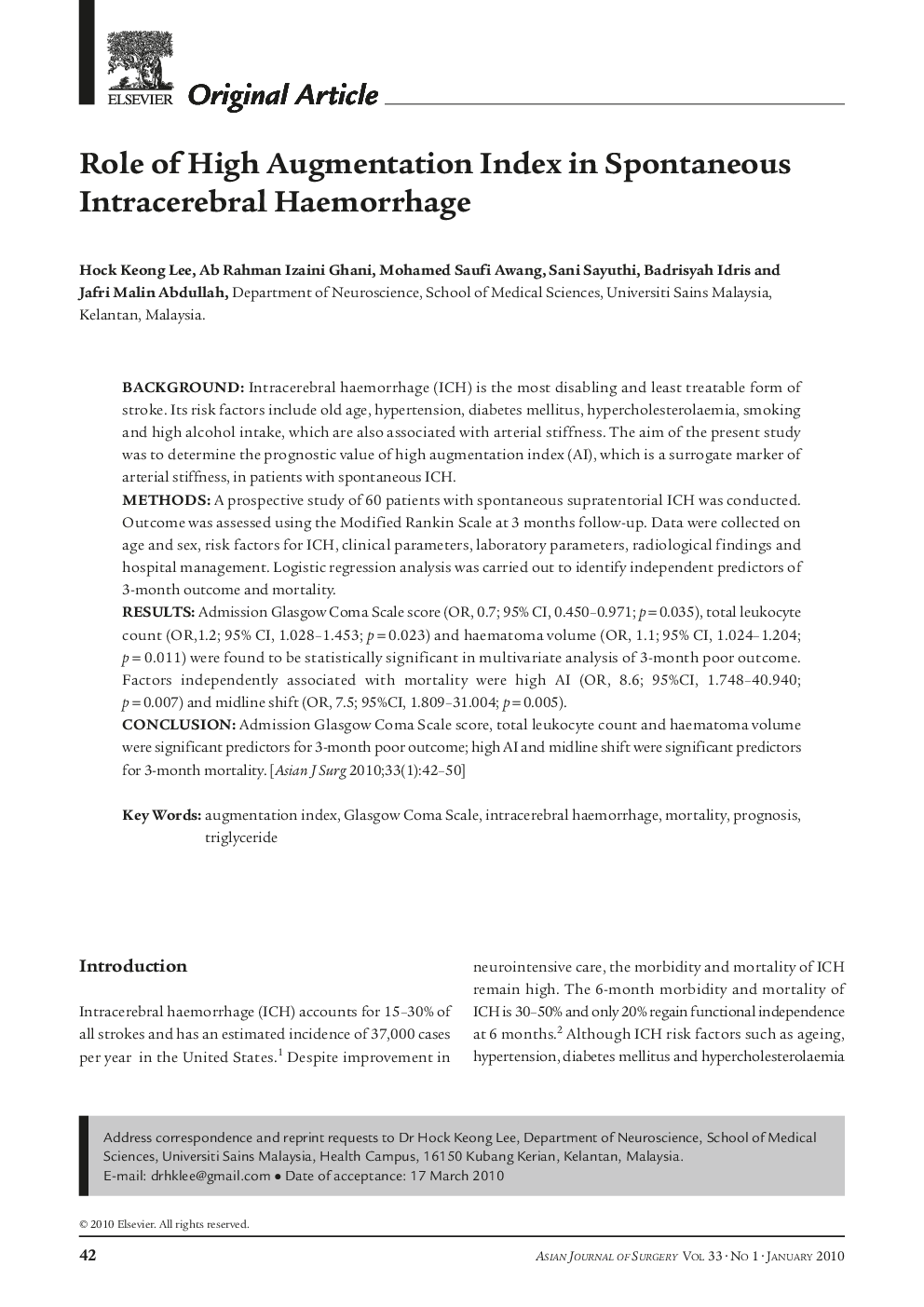| Article ID | Journal | Published Year | Pages | File Type |
|---|---|---|---|---|
| 4282707 | Asian Journal of Surgery | 2010 | 9 Pages |
BackgroundIntracerebral haemorrhage (ICH) is the most disabling and least treatable form of stroke. Its risk factors include old age, hypertension, diabetes mellitus, hypercholesterolaemia, smoking and high alcohol intake, which are also associated with arterial stiffness. The aim of the present study was to determine the prognostic value of high augmentation index (AI), which is a surrogate marker of arterial stiffness, in patients with spontaneous ICH.MethodsA prospective study of 60 patients with spontaneous supratentorial ICH was conducted. Outcome was assessed using the Modified Rankin Scale at 3 months follow-up. Data were collected on age and sex, risk factors for ICH, clinical parameters, laboratory parameters, radiological findings and hospital management. Logistic regression analysis was carried out to identify independent predictors of 3-month outcome and mortality.ResultsAdmission Glasgow Coma Scale score (OR, 0.7; 95% CI, 0.450–0.971; p = 0.035), total leukocyte count (OR,1.2; 95% CI, 1.028–1.453; p = 0.023) and haematoma volume (OR, 1.1; 95% CI, 1.024–1.204; p = 0.011) were found to be statistically significant in multivariate analysis of 3-month poor outcome. Factors independently associated with mortality were high AI (OR, 8.6; 95%CI, 1.748–40.940; p = 0.007) and midline shift (OR, 7.5; 95%CI, 1.809–31.004; p = 0.005).ConclusionAdmission Glasgow Coma Scale score, total leukocyte count and haematoma volume were significant predictors for 3-month poor outcome; high AI and midline shift were significant predictors for 3-month mortality.
